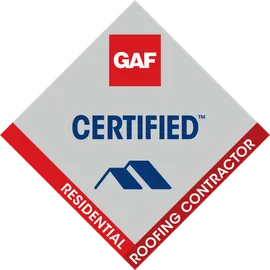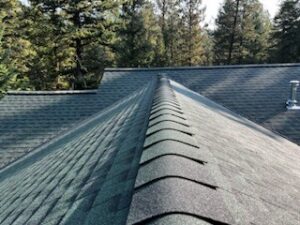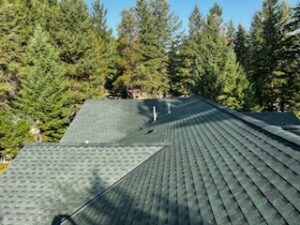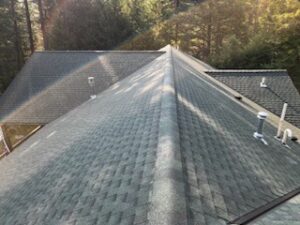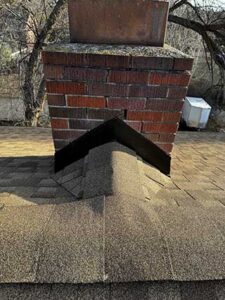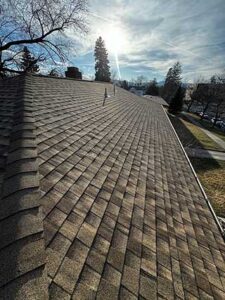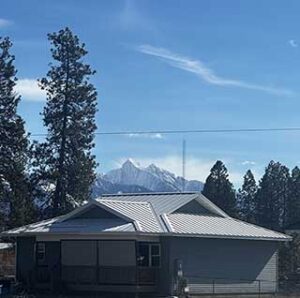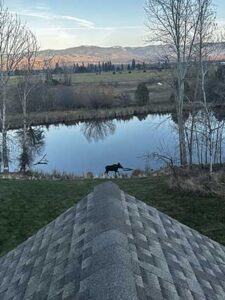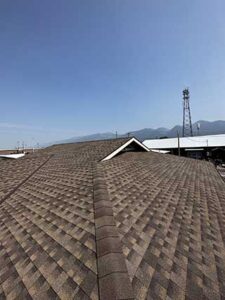Top Quality Roofing Services in Missoula, MT and the Surrounding Areas

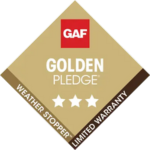

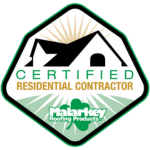



Schedule Your Free Inspection
Winter’s Toll on Your Roof: Common Signs of Damage and What to Do Next
Winter is one of the most challenging seasons for your roof. Heavy snow, ice dams, freezing temperatures, and strong winds can leave lasting damage that isn’t always obvious right away. As temperatures rise and the snow melts, it’s crucial to inspect your roof for any issues before they become bigger, more expensive problems.
In this blog, we’ll explore the most common types of winter roof damage, how to identify them, and what steps you should take to protect your home moving forward, like professional roof repair.
Ice Dam Damage
What Are Ice Dams?
Ice dams form when warm air from inside the home escapes into the attic, causing snow on the roof to melt. As the melted snow flows down to the colder edges of the roof, it refreezes, creating a buildup of ice. Over time, this dam prevents further melting snow from properly draining, leading to trapped water that can seep under shingles and into the home.
Signs of Ice Dam Damage:
- Water stains on ceilings or walls.
- Peeling paint or sagging drywall.
- Mold or mildew growth in the attic.
- Shingle deterioration or curling near roof edges.
What to Do Next:
- If water intrusion has already occurred, remove affected insulation and drywall to prevent mold.
- Hire a professional roofer to assess whether your attic insulation and ventilation need improvement.
- To prevent future ice dams, ensure proper attic ventilation and use heat cables along eaves where necessary.
Roof Leaks and Water Damage
Why Winter Causes Roof Leaks:
Cold temperatures cause roofing materials to contract, creating gaps that allow water to seep in. Additionally, accumulated snow can hold moisture against the roof, increasing the risk of leaks as temperatures fluctuate without roof repair.
Signs of Roof Leaks:
- Discolored or damp patches on ceilings.
- A musty smell indicating mold or mildew growth.
- Visible dripping water during or after snowmelt.
- Soft or weakened drywall near rooflines.
What to Do Next:
- Identify the source of the leak—check attic insulation and flashing around vents, chimneys, and skylights.
- If there are visible cracks or missing shingles, schedule a professional roof inspection.
- For minor leaks, roofing caulk or temporary patching can provide a short-term fix, but professional repairs are necessary to prevent recurring problems.
Gutter and Downspout Damage
How Winter Affects Gutters:
Snow and ice put a tremendous amount of weight on gutters, causing them to sag, crack, or detach from the home. Ice buildup inside gutters can also block water flow, forcing melted snow to back up onto the roof, increasing the risk of leaks and ice dams.
Signs of Gutter Damage:
- Gutters pulling away from the roofline.
- Cracks or splits in the gutter material.
- Water pooling near the foundation of your home.
- Peeling paint or rust on gutters and downspouts.
What to Do Next:
- Remove any leftover ice or debris from gutters using warm water or a gutter-cleaning tool.
- Check for loose fasteners and resecure any detached sections.
- If gutters are severely damaged, consider installing seamless or heated gutter systems to prevent future issues.
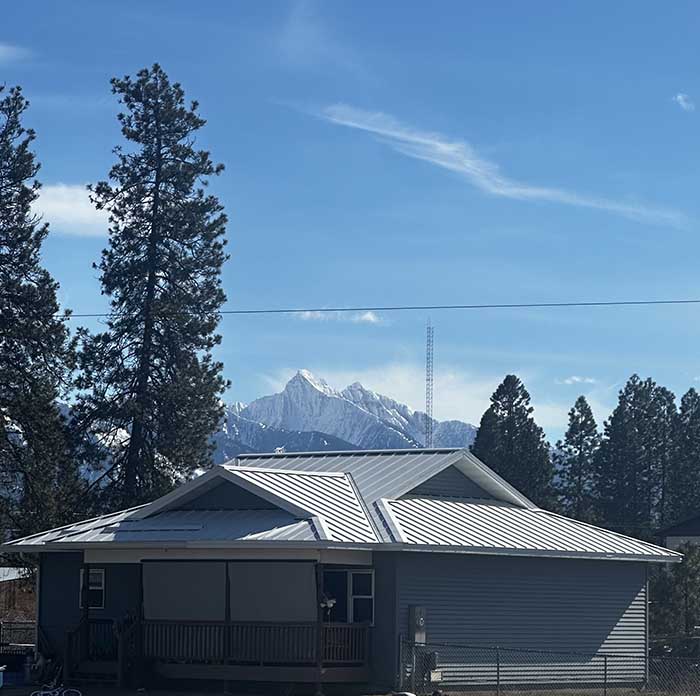
Shingle Damage and Roof Material Wear
Winter’s Impact on Shingles:
Harsh winter conditions cause asphalt shingles to become brittle, increasing the likelihood of cracking, curling, or losing granules. Strong winds can also lift or remove shingles entirely, leaving the roof deck exposed to moisture.
Signs of Shingle Damage:
- Missing or visibly lifted shingles.
- Granules collecting in gutters or downspouts.
- Warping or curling along roof edges.
- Exposed nails or torn underlayment.
What to Do Next:
- Perform a visual inspection of your roof from the ground using binoculars.
- If you spot minor damage, consider replacing individual shingles to prevent further deterioration.
- For extensive damage, contact a roofing contractor to assess whether a full roof repair or replacement is needed.
Structural Damage from Snow Load
How Heavy Snow Causes Roof Strain:
A significant accumulation of wet, heavy snow can add immense weight to a roof, potentially leading to structural stress or even collapse in extreme cases.
Signs of Snow Load Damage:
- Sagging areas of the roof.
- Unusual creaking or cracking sounds from above.
- Cracks forming in walls or ceilings.
- Difficulty opening or closing doors and windows (a sign of structural shifting).
What to Do Next:
- Use a roof rake to remove excess snow, but avoid using sharp tools that can damage shingles.
- If you notice signs of severe structural stress, evacuate the home and call a professional immediately for roof repair or replacement.
- Strengthen roof support systems if your area frequently experiences heavy snowfalls.
How to Prevent Winter Roof Damage in the Future
Once you’ve assessed the damage from winter, the next step is to take preventive action for future seasons. Here’s what you can do:
Schedule Regular Roof Inspections
- Have a professional inspect your roof at least once a year, preferably in early fall, before winter arrives.
- Address small issues before they turn into costly winter roof repairs.
Improve Attic Insulation and Ventilation
- Proper insulation prevents heat from escaping, reducing ice dam formation.
- Ventilation helps regulate roof temperature and moisture levels, preventing condensation and mold.
Keep Gutters Clean Year-Round
- Clear leaves and debris in the fall to prevent ice buildup.
- Consider installing gutter guards to reduce maintenance.
Upgrade Roofing Materials
- If you experience recurring winter damage, consider investing in impact-resistant shingles or metal roofing.
- Metal roofs naturally shed snow and ice, reducing the risk of heavy accumulation.
Prepare an Emergency Roofing Kit
- Keep supplies like roofing tarps, caulk, and a roof rake on hand for quick fixes during winter storms.
- Know the contact information for a trusted roofing contractor in case of urgent roof repairs.
The Impact of Freeze-Thaw Cycles on Your Roof
One of the most overlooked yet damaging effects of winter is the freeze-thaw cycle. This occurs when snow or ice melts during the day due to sunlight or heat escaping from the attic, then refreezes at night as temperatures drop. Over time, this repeated expansion and contraction can cause significant damage to your roofing materials.
How Freeze-Thaw Cycles Affect Your Roof
Cracks in Shingles and Roofing Materials
- As melted snow seeps into small cracks or gaps in shingles, it expands when it refreezes, forcing the cracks to widen. This can eventually lead to broken shingles, leaks, and compromised underlayment.
Weakened Flashing and Sealants
- Flashing around vents, chimneys, and skylights can deteriorate from repeated freeze-thaw cycles. As it expands and contracts, gaps may form, allowing water to penetrate and cause leaks.
Deterioration of Roofing Adhesives
- In some cases, roofing materials are held together with adhesives that can break down over time due to fluctuating temperatures. This can lead to loose shingles, lifted flashing, and exposed underlayment without proper roof repair.
What to Do Next
- Inspect your roof for small cracks or lifting shingles in early spring. If you notice any signs of damage, address them promptly before they develop into more significant problems.
- Check flashing around chimneys, vents, and skylights. If you spot gaps or deteriorated sealant, have it replaced to prevent future leaks.
- Apply a protective sealant to your roof. This can help prevent water penetration and slow the effects of freeze-thaw cycles.
- Consider upgrading to freeze-resistant roofing materials. Metal roofs, rubberized shingles, and synthetic slate are more resistant to extreme temperature fluctuations.
How to Prepare Your Roof for Spring After Winter Damage
After a long winter, your roof needs proper care and maintenance to ensure it remains in good condition as spring brings warmer temperatures and increased rainfall. Here’s a step-by-step process for preparing your roof for the season ahead.
Perform a Visual Roof Inspection
- Use binoculars to look for missing, cracked, or curling shingles.
- Check the condition of gutters and downspouts to ensure they are securely attached.
- Look for any sagging or bowing areas that may indicate structural stress from heavy snow.
Clean Your Gutters and Downspouts
- Remove any leftover debris, including leaves, twigs, and ice remnants, to prevent clogging.
- Ensure downspouts are directing water away from the foundation to prevent water pooling.
Check Your Attic for Moisture Damage
- Look for mold, mildew, or damp insulation, which may indicate leaks.
- If your attic has poor ventilation, consider installing additional vents to prevent excess heat buildup in the warmer months.
Schedule a Professional Roof Inspection
- A trained roofer can spot small issues before they turn into expensive roof repairs.
- They can also assess the overall condition of your roof and recommend any necessary maintenance or upgrades.
By taking these steps in early spring, you can prevent minor winter damage from escalating and ensure your roof is ready to handle the changing seasons ahead.
When to Call a Professional
While some minor roof repairs can be handled by homeowners, it’s best to call a professional for:
- Major leaks or widespread water damage.
- Structural concerns like sagging roofs or large cracks.
- Extensive shingle damage or missing roofing sections.
- Severe gutter detachment or failure.
Ignoring these issues can lead to more costly damage, including mold growth, compromised insulation, and even roof collapse. A professional assessment ensures your roof is safe, secure, and ready for the next season.
Watch for Signs of Winter Wear on Your Roof
Winter can take a serious toll on your roof, but understanding the warning signs and taking proactive steps can help you avoid costly repairs. By checking for common issues like ice dam damage, leaks, gutter problems, and shingle wear, you can address minor damage before it escalates. Investing in proper insulation, ventilation, and regular maintenance will also keep your roof in top shape for years to come.
If you notice any significant winter damage, don’t wait—contact a roofing professional to assess and repair the issue before spring weather brings additional challenges. By staying ahead of winter’s impact, you can ensure your home remains safe, dry, and protected throughout the year.

